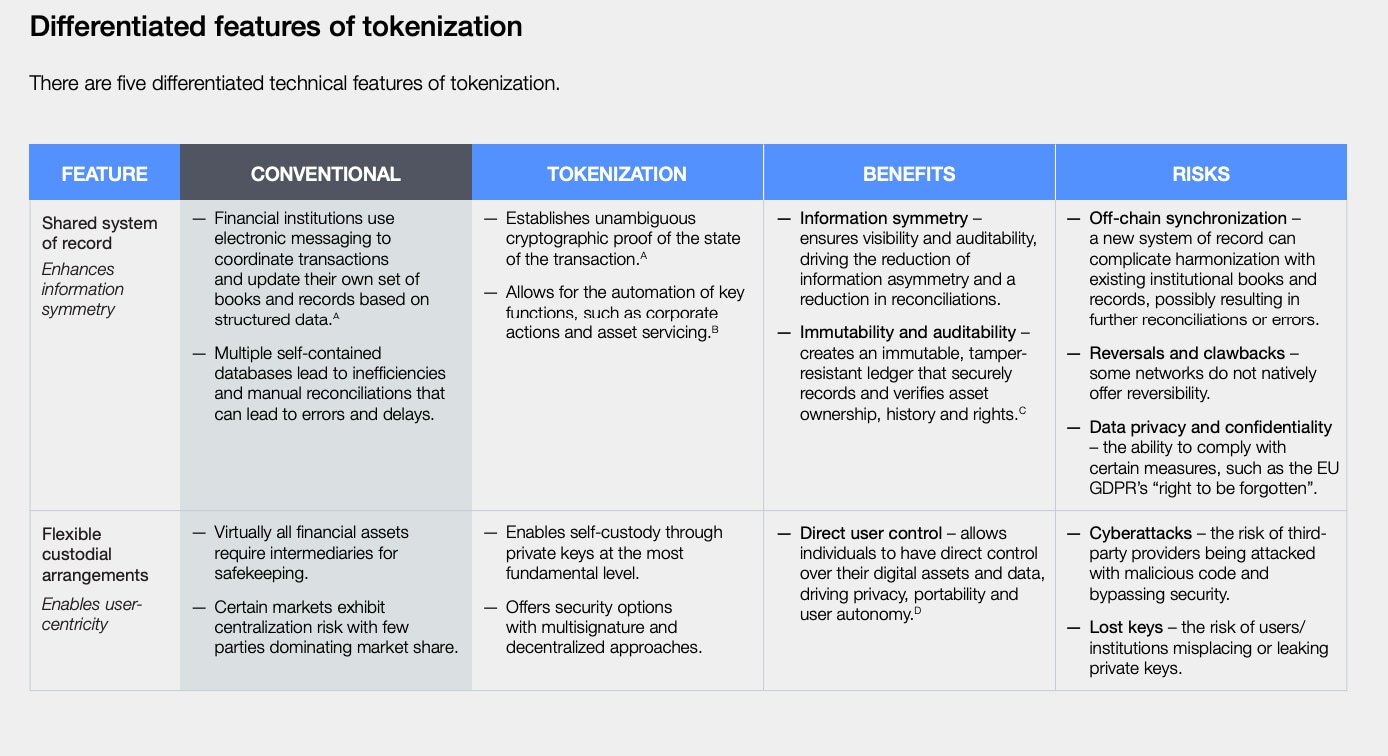
Asset tokenization could open up the financial markets to everyone. Image: Getty Images/iStockphoto
This article is part of:Centre for Financial and Monetary Systems
- The financial markets are undergoing a quiet revolution powered by asset tokenization.
- Asset tokenization could make investing more accessible, faster, cheaper and more transparent.
- When institutions, regulators and tech providers come together to build trusted, interoperable frameworks, we are likely to see asset tokenization fulfil its potential.
Recent developments in US regulation following the GENIUS Act have put digital assets in the headlines. This regulation is focused on digital currency, but the next phase of digital assets is focused on asset tokenization.
In an increasingly digital world, the financial markets are undergoing a quiet revolution, one that promises to make investing more accessible, faster, cheaper and more transparent.
This revolution is powered by asset tokenization, a concept that leverages blockchain technology to digitize and fractionalize ownership of real-world assets, like stocks, bonds and real estate.
While the idea of digital assets may bring to mind volatile cryptocurrencies, asset tokenization is something quite different and arguably more transformative for global finance.
Not to be confused with digital payments, at its core, tokenization has the potential to increase access to financial markets via opening up ownership of previously inaccessible assets, particularly for retail investors and people in emerging economies who have found it difficult to access traditional financial institutions.
The World Economic Forum recently published the Asset Tokenization in Financial Markets: The Next Generation of Value Exchange report, which takes a deep dive on this topic.
- How is the World Economic Forum promoting the responsible use of blockchain?
The World Economic Forum's Platform for Shaping the Future of Blockchain and Digital Assets ensures equity, interoperability, transparency, and trust in the governance of this technology for everyone in society to benefit from blockchain’s transformative potential.
- The Forum helped central banks build, pilot and scale innovative policy frameworks to guide the implementation of blockchain, with a focus on central bank digital currencies.
- The Redesigning Trust with Blockchain in the Supply Chain initiative is helping supply chain decision-makers implement blockchain, while ensuring that this technology is utilized in a secure, responsible and inclusive way.
- The Centre for the Fourth Industrial Revolution UAE is testing the application of digital assets and tokenization to improve financial systems.
Contact us for more information on how to get involved.
What is asset tokenization?
Asset tokenization is the process of creating a digital representation, called a "token", of a real-world asset on a distributed ledger or blockchain. These tokens are programmable, traceable and can be transferred peer-to-peer.
Each token acts as a digital certificate of ownership or a claim to a portion of an asset. For example, instead of buying a whole share in a private company or an entire commercial building, investors can buy fractions of that asset represented as tokens. These tokens can be traded on blockchain-based systems, potentially 24/7 and globally.
Breaking down the benefits
Asset tokenization offers several potential advantages over traditional finance, especially in terms of accessibility, efficiency and transparency.
1. Democratizing financial market access
One of the most powerful promises of tokenization is its ability to level the playing field for retail investors and those in developing markets. Historically, investing in certain asset classes, like private equity, real estate or commodities, was reserved for institutional players or high-net-worth individuals due to high capital requirements, regulatory barriers and limited access to global markets.
Tokenization changes this by enabling asset fractionalization, breaking assets into smaller, more affordable units. Someone in Bangkok, for instance, could buy a token representing a share in a Bangkok office building. This radically lowers the barriers to entry, enabling broader participation in wealth-building opportunities.
In emerging economies, where capital markets are less developed, tokenization can serve as a critical tool. With just a smartphone and internet access, individuals can invest in financial assets, bypassing some limitations they face today while still maintaining investor protections.
2. Cheaper, more efficient transactions
Traditional financial systems are quite complicated, meaning they are costly and slow down the settlement process. Tokenization replaces many of these layers with smart contracts – self-executing code embedded in blockchain networks. In emerging markets, implementing this technology could mean leapfrogging legacy systems.
These smart contracts automate tasks like compliance checks, dividend payments or settlements, reducing human error and lowering operational expenses. This efficiency directly translates to cost savings, particularly beneficial for smaller investors who are disproportionately impacted by fees.
Moreover, custody becomes more flexible. Investors can manage their own wallets or opt for custodial services depending on their preference and risk appetite, offering more personalized financial experiences.
3. Faster settlement times
In traditional markets, it can take days to settle trades as it involves multiple parties and reconciliation processes. With tokenized assets, settlement can occur in near-real-time on a blockchain network.
This acceleration is especially impactful in cross-border transactions, which are often delayed by time zone differences, regulatory approvals and interbank settlements.
4. Greater transparency and trust
One of blockchain’s foundational features is its shared system of record, a single, immutable ledger that permitted participants can access - imagine one long list of all transactions that have ever occurred, verified by each computer in the network every time a new transaction is logged. This transparency offers increased visibility into ownership structures, transaction history and asset provenance.
For financial regulators, this means easier auditing and compliance oversight. For investors, it builds trust. Fraud, double-spending or manipulation become significantly harder when all actions are recorded and traceable in real time.
This transparency reduces information asymmetry, ensuring that participants can operate with a clearer understanding of asset status and risks.

Have you read?
- Why the EU’s 2040 climate target could reshape global carbon markets
- Stable growth and broader access: Here’s how fintech is reshaping finance
- The GENIUS Act is designed to regulate stablecoins in the US, but how will it work?
Challenges and considerations
Asset tokenization is not without challenges. Adoption is currently uneven, slowed by:
• Limited interoperability between blockchain networks and legacy infrastructure.
• Unclear legal frameworks for tokenized assets.
• Liquidity concerns in secondary markets.
Design choices, such as whether to use permissioned or permissionless ledgers, the selection of settlement assets (stablecoins, CBDC, fiat) and ensuring cybersecurity and privacy all require careful navigation.
Nevertheless, major financial institutions and policymakers are increasingly recognizing these hurdles and working towards standardization and coordinated frameworks to support the safe scale-up of tokenized markets.
Real-world use cases emerging
Tokenization is already being piloted in several key financial market areas:
Issuance
Digital-native bonds and equities are being issued on blockchain platforms, reducing underwriting costs and improving time-to-market.
Securities financing
Tokenized collateral is enabling real-time margining and risk management across trading venues.
Asset management
Funds are exploring tokenized shares, giving investors more flexibility and control over their holdings.
As these pilots mature and infrastructure improves, the long-term vision is for seamless composability, where tokenized assets can move frictionlessly across applications and platforms.
The road ahead
Asset tokenization is still in its early stages, but its trajectory is clear. As technology, regulation and market structures evolve, tokenized finance will become a pillar of the next-generation financial system by removing gatekeepers, reducing friction and making assets more accessible and transparent.
As institutions, regulators and tech providers come together to build trusted, interoperable frameworks, we are likely to see asset tokenization fulfil its potential.



